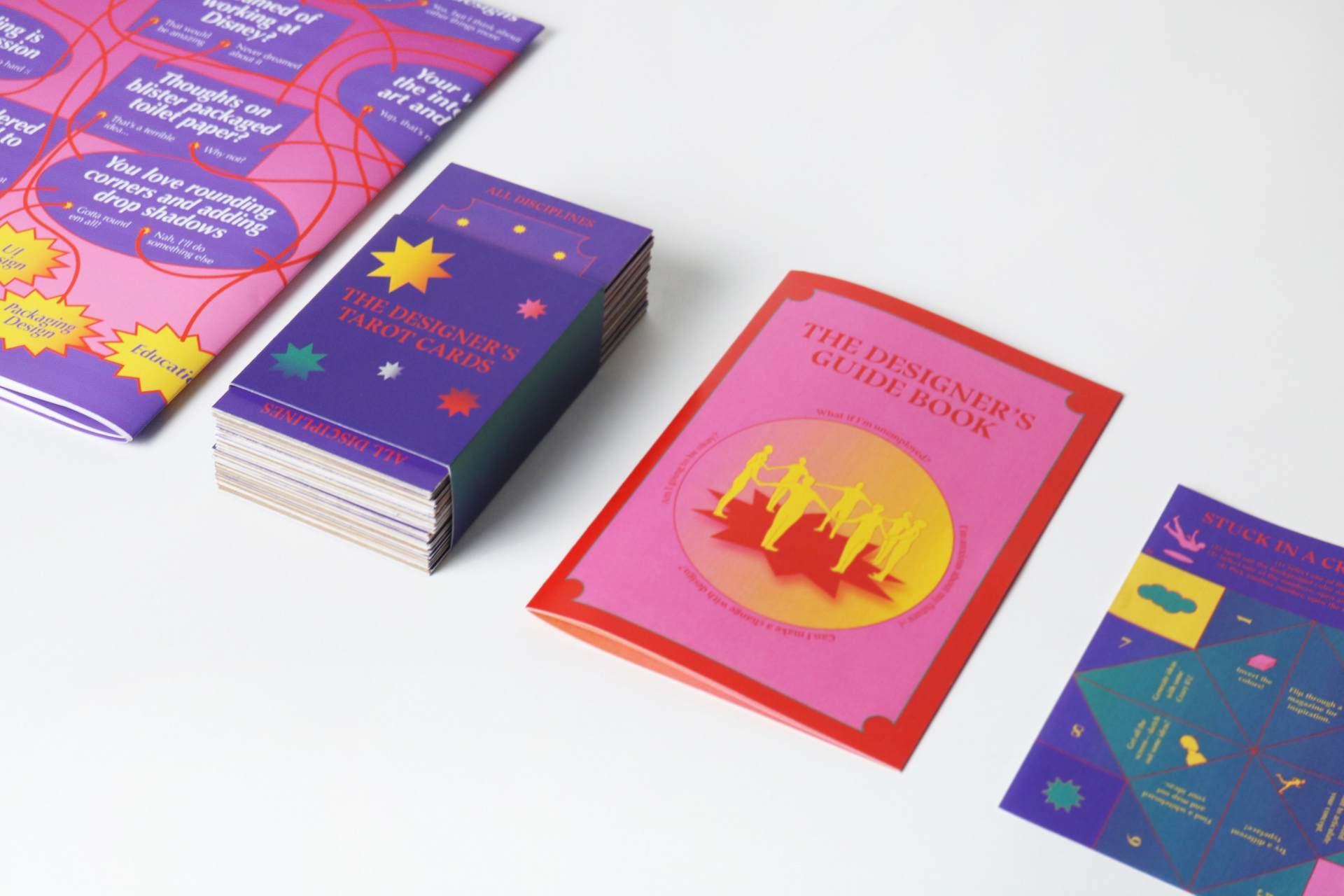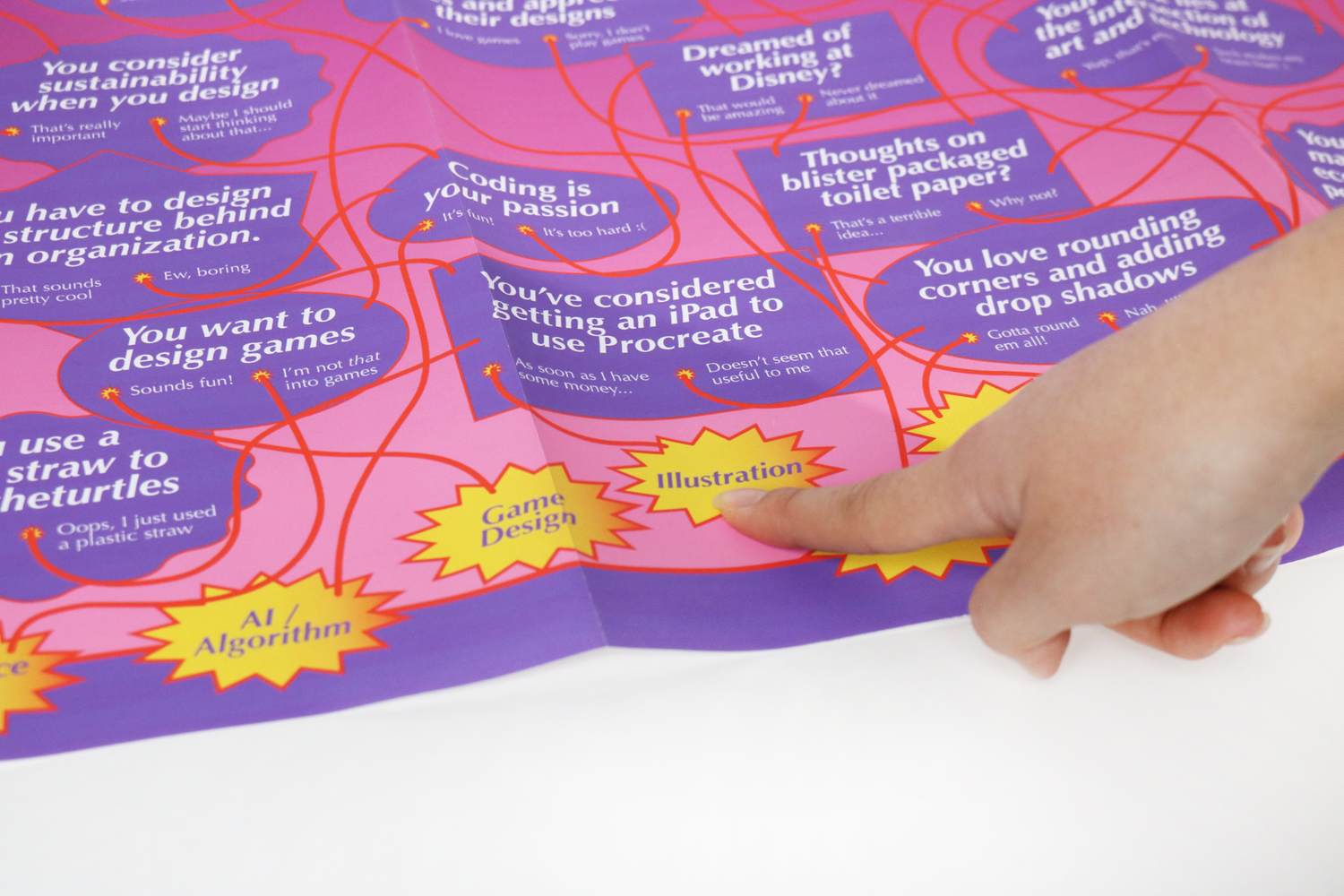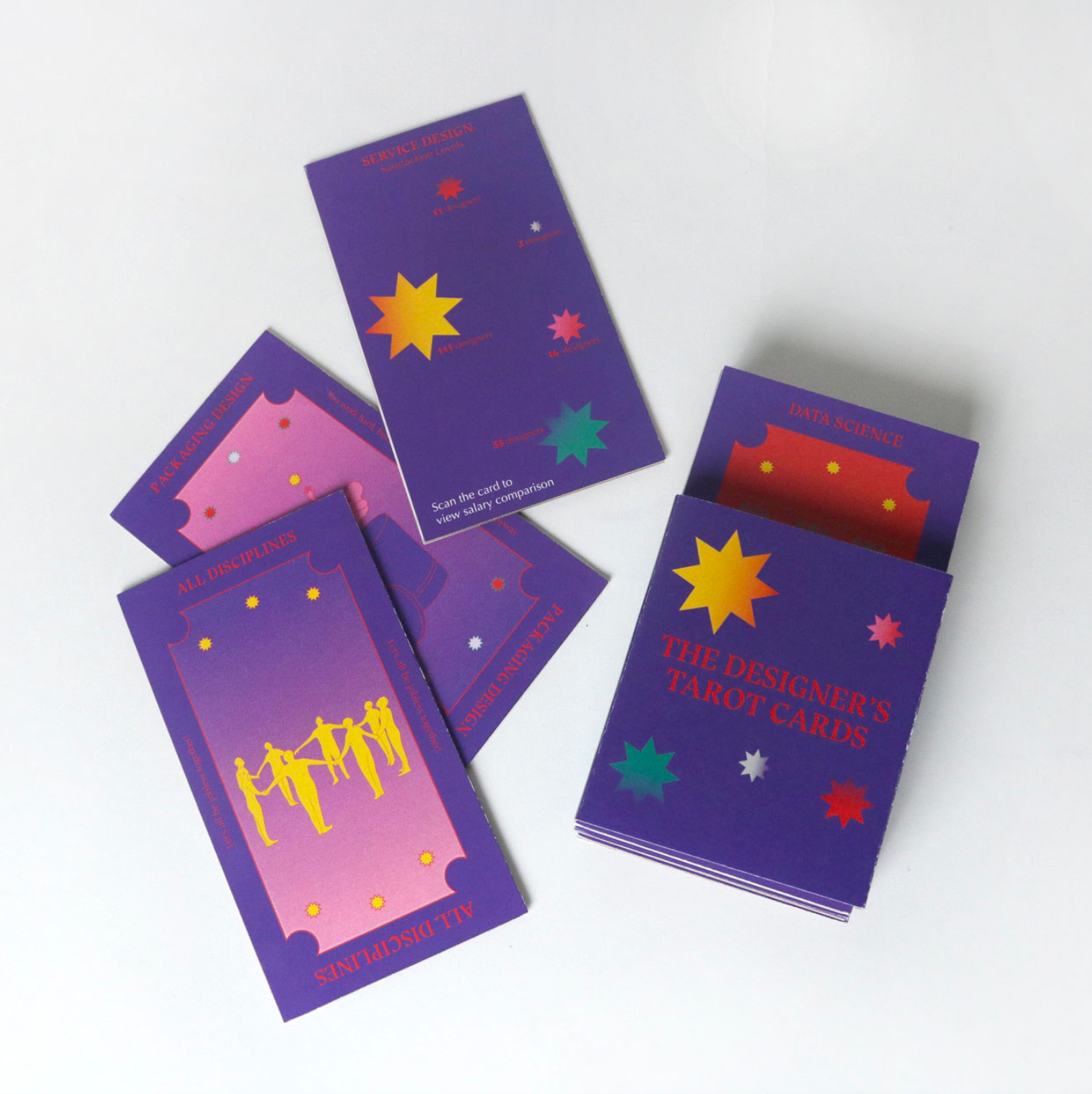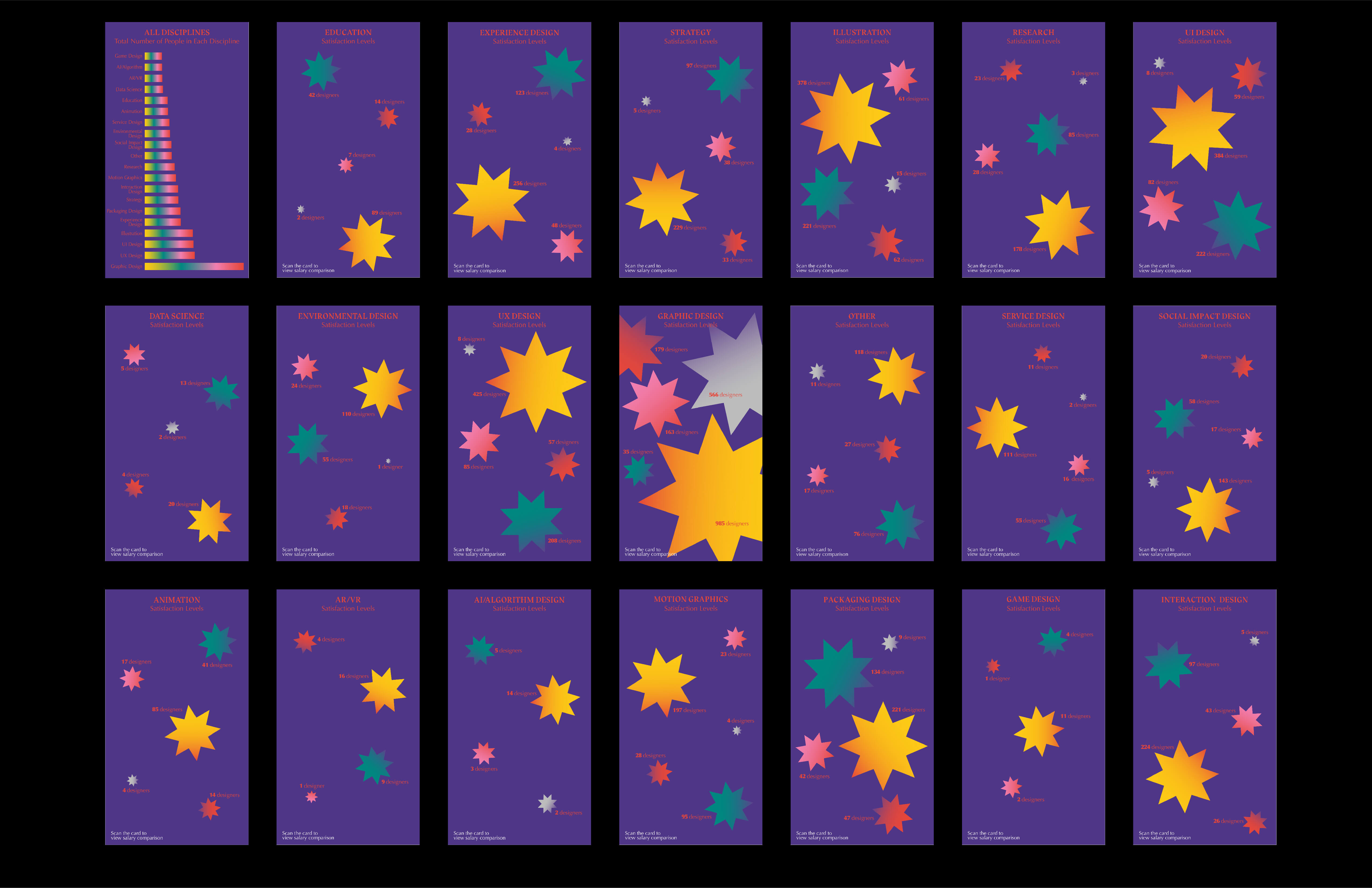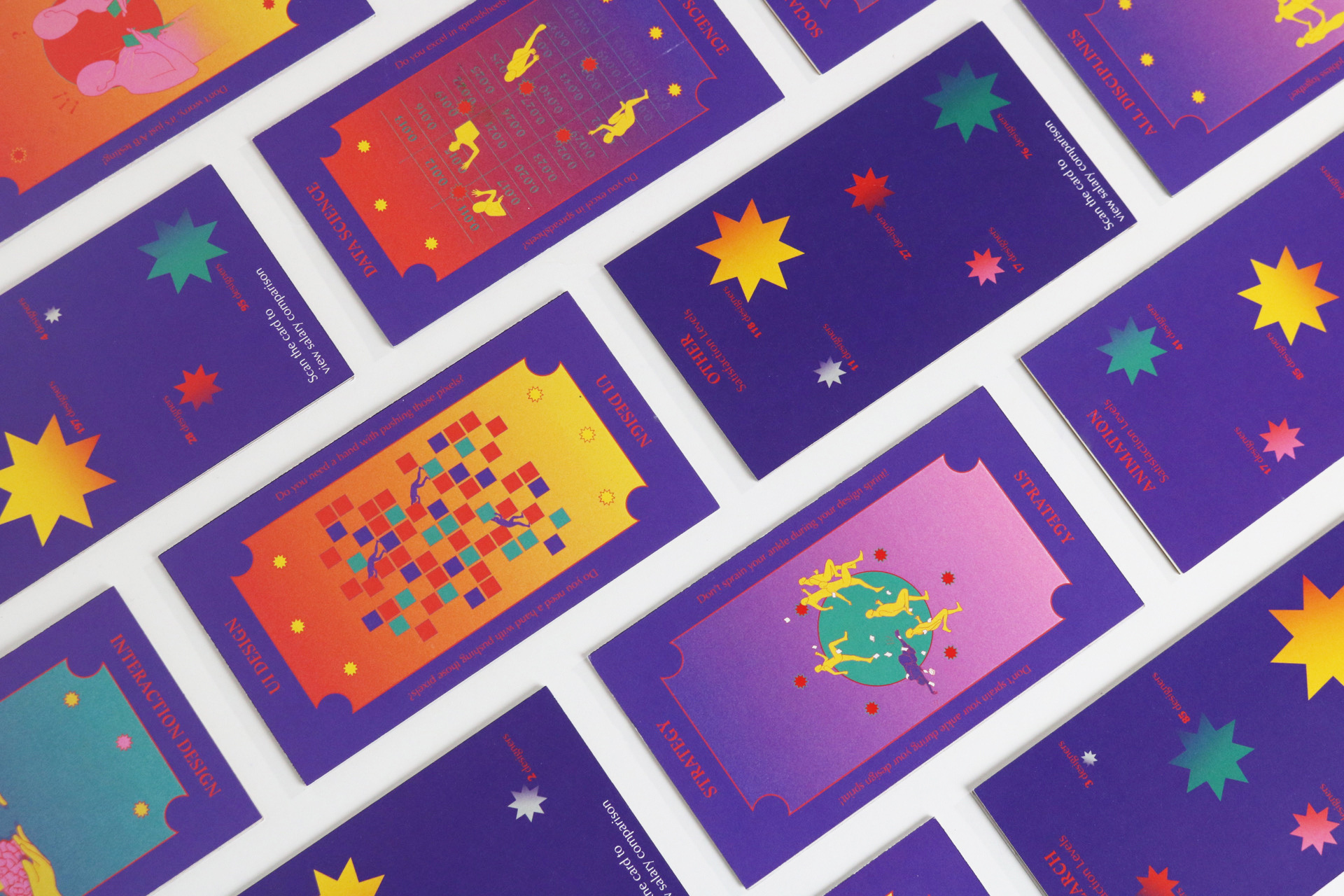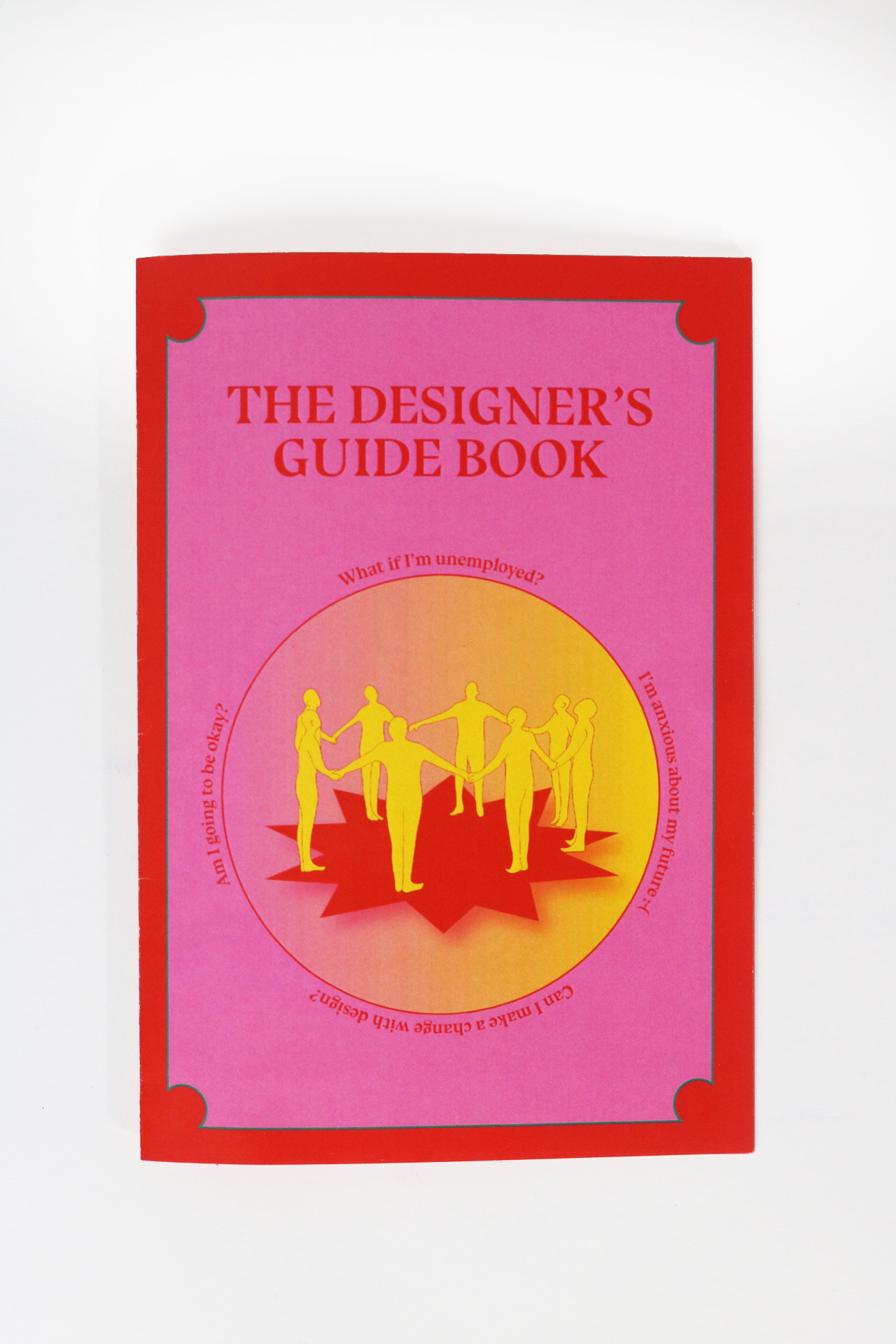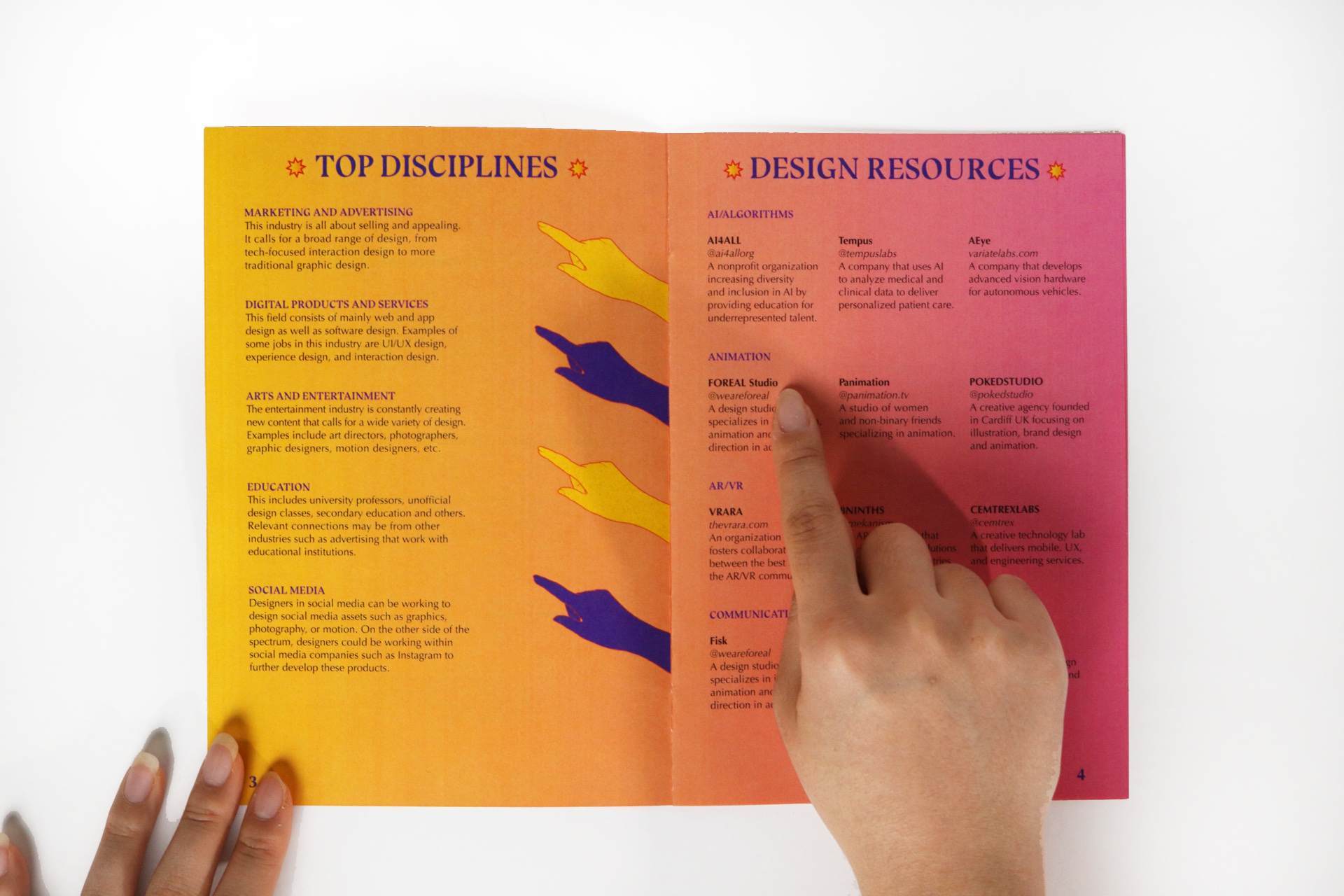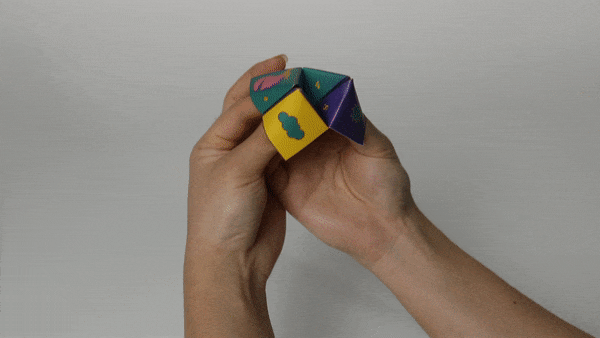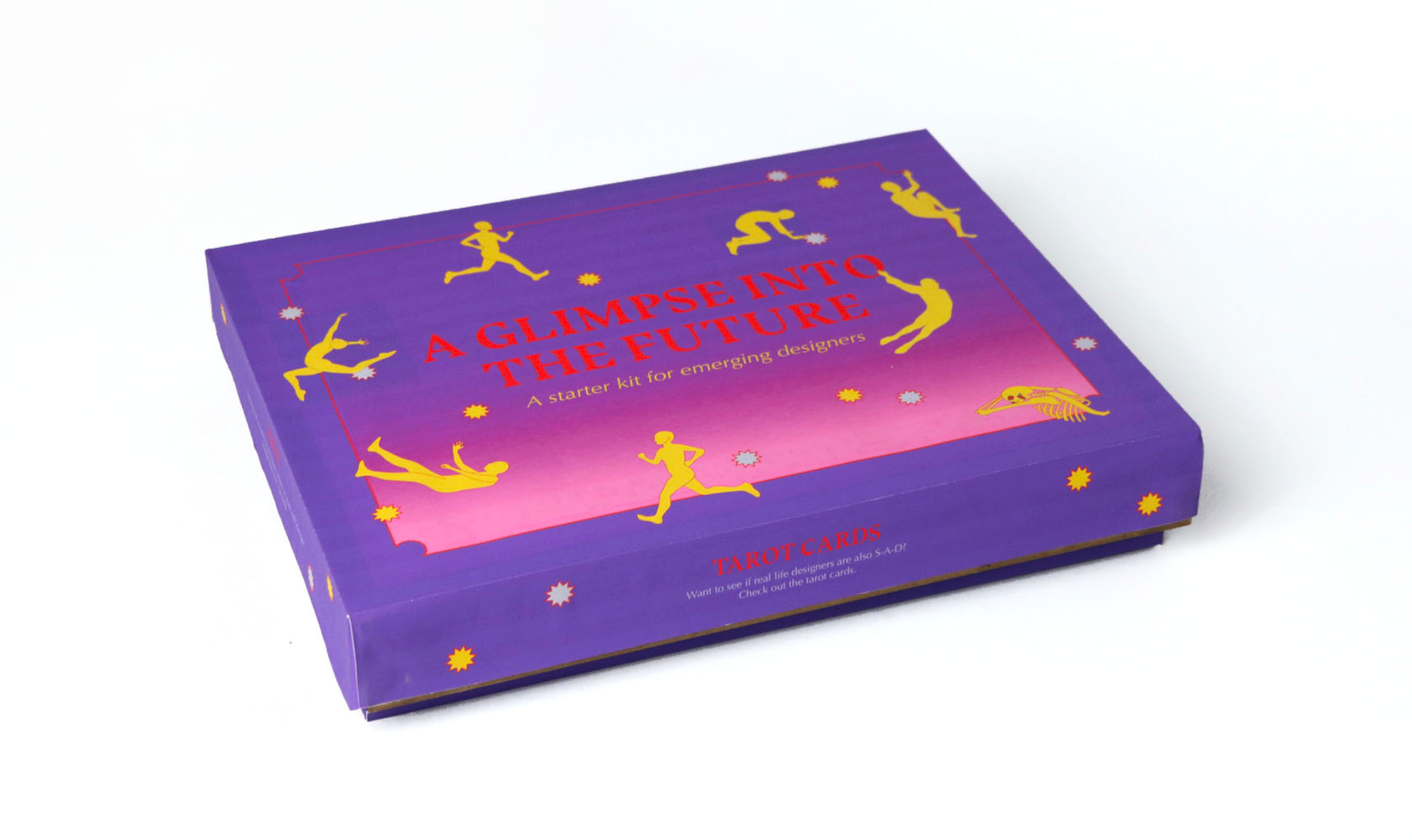
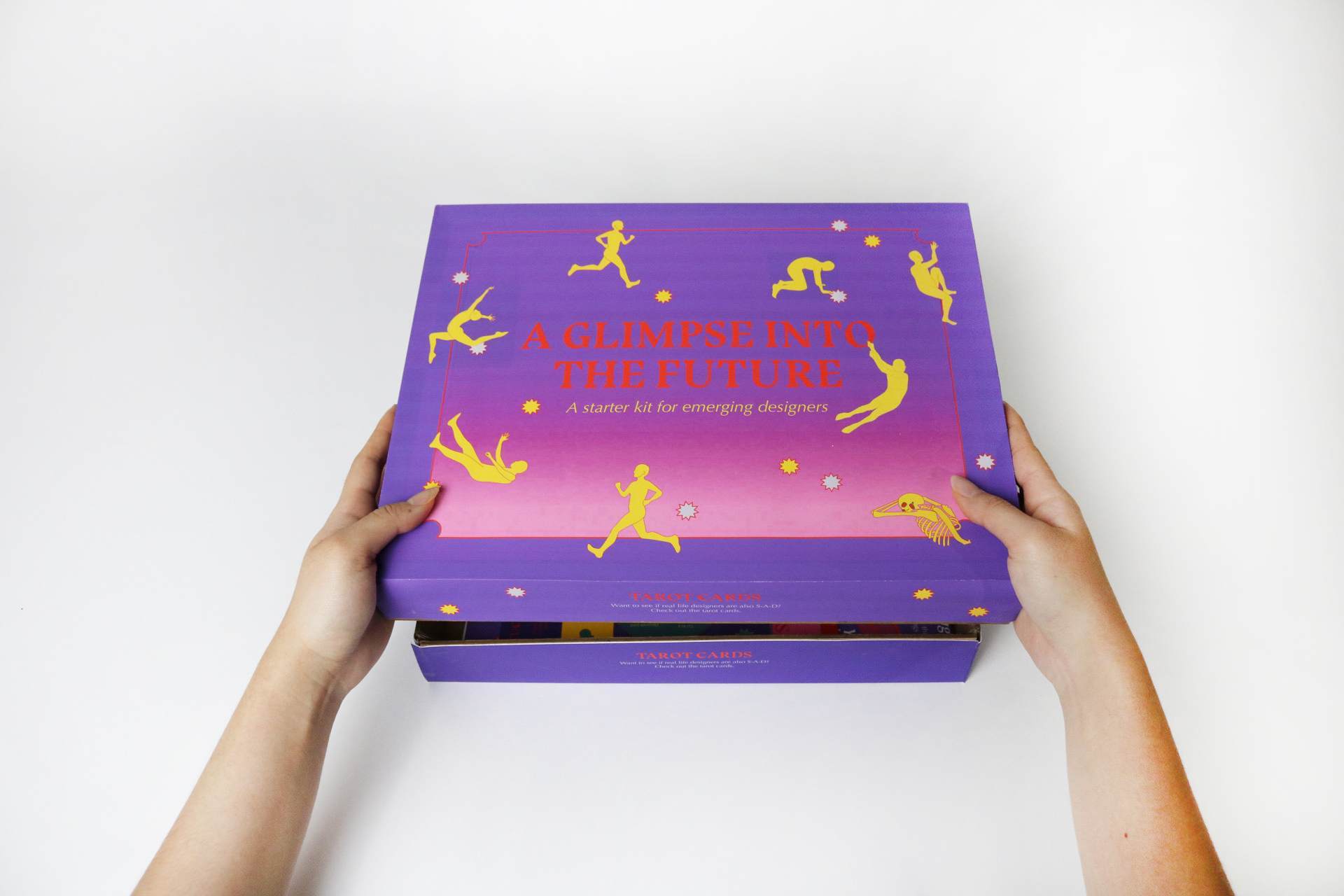
1. Box
By using the graphics and gradient effect from the tarot cards, we applied it to the cover of the box. Alongside the title, the box also has small quotes on the sides of the box.
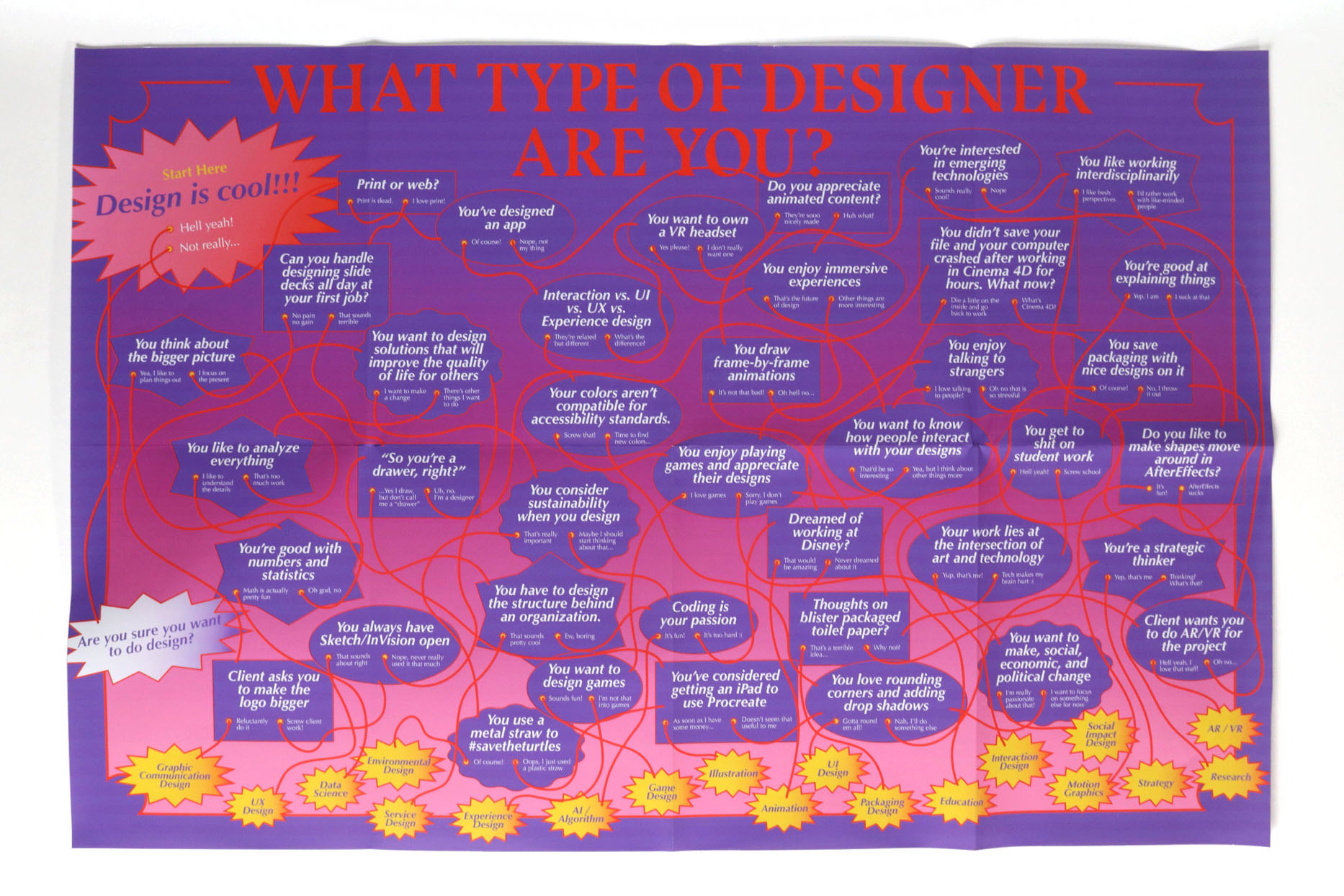
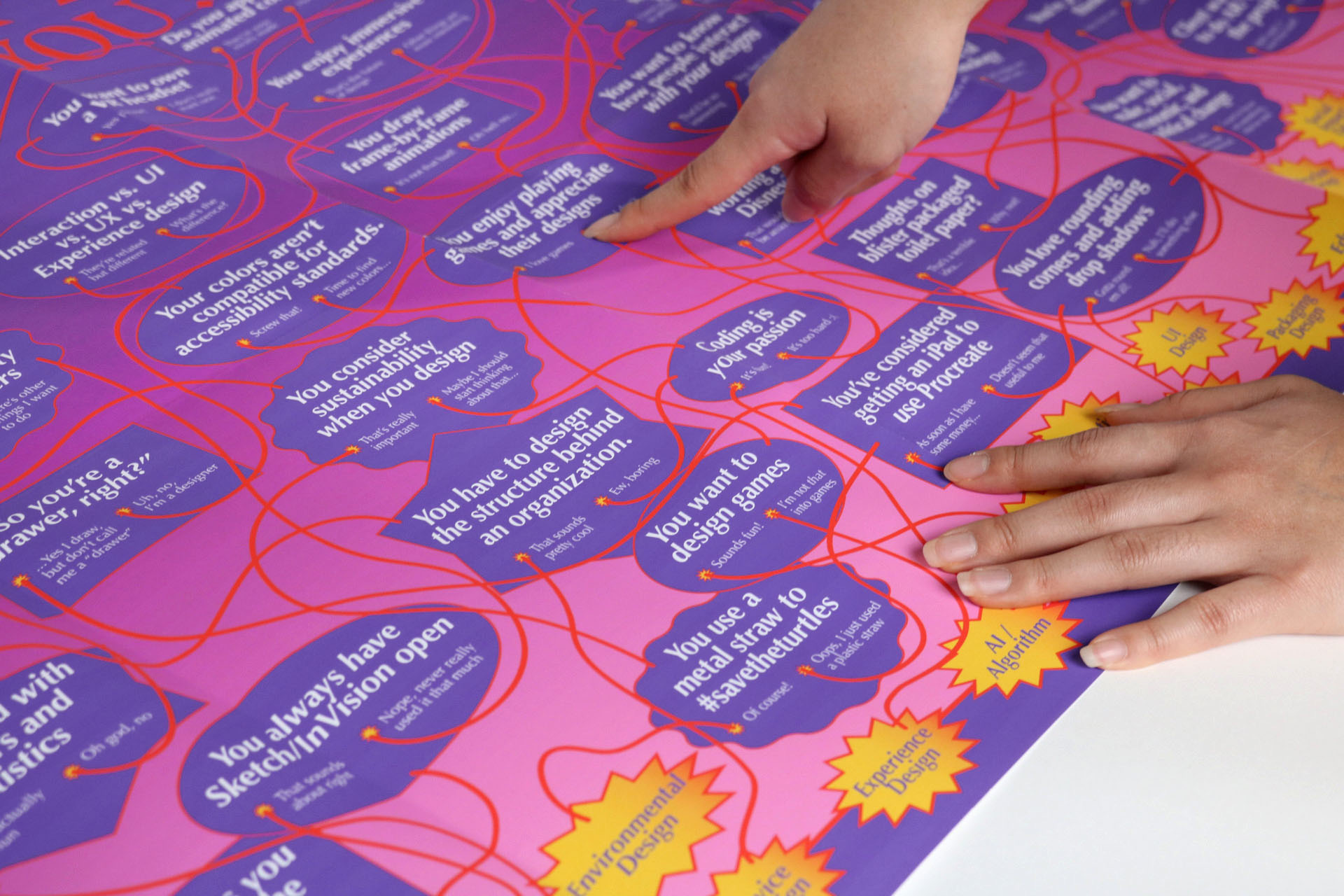
2. Decision Tree
As the first step, the decision tree offers young designers, who are unsure of what they want to pursue, a way to find a discipline that matches their interests.

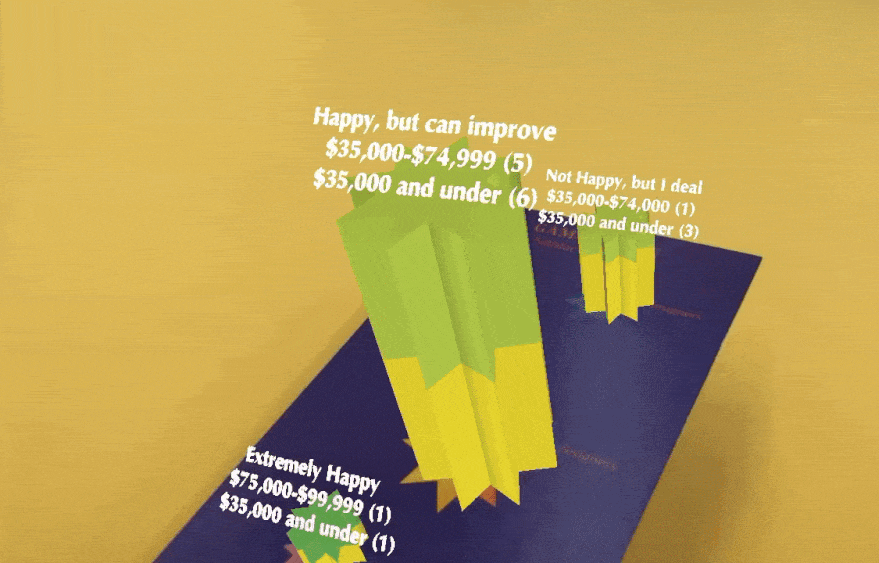
3. Tarot Cards
Based on specific disciplines within the design field, the tarot cards communicate our AIGA data on designers’ satisfaction and salary through illustrations, data visualization, and AR.
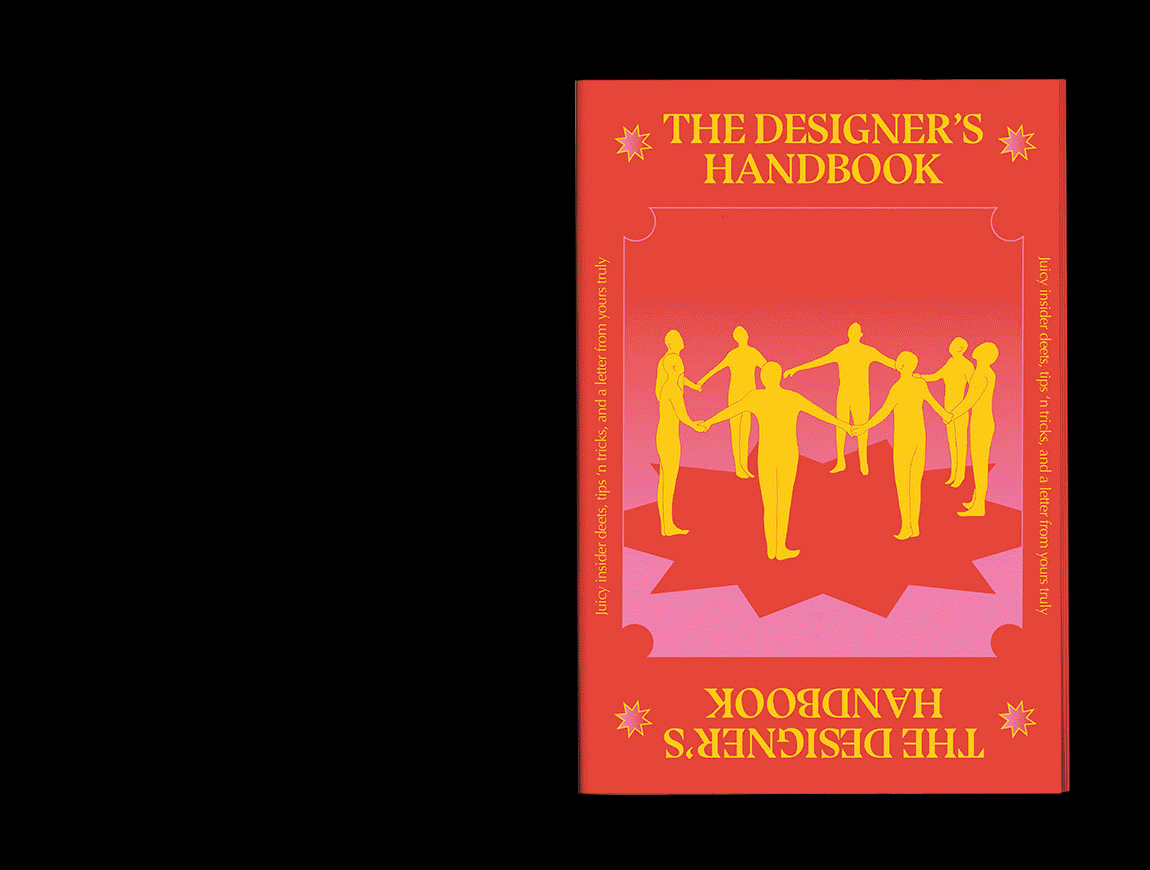
4. Designer’s Guidebook
The Designer’s Guidebook gives the audience a general look into the design field. It includes common design questions, important resources for each discipline, tips/list of skillsets needed.

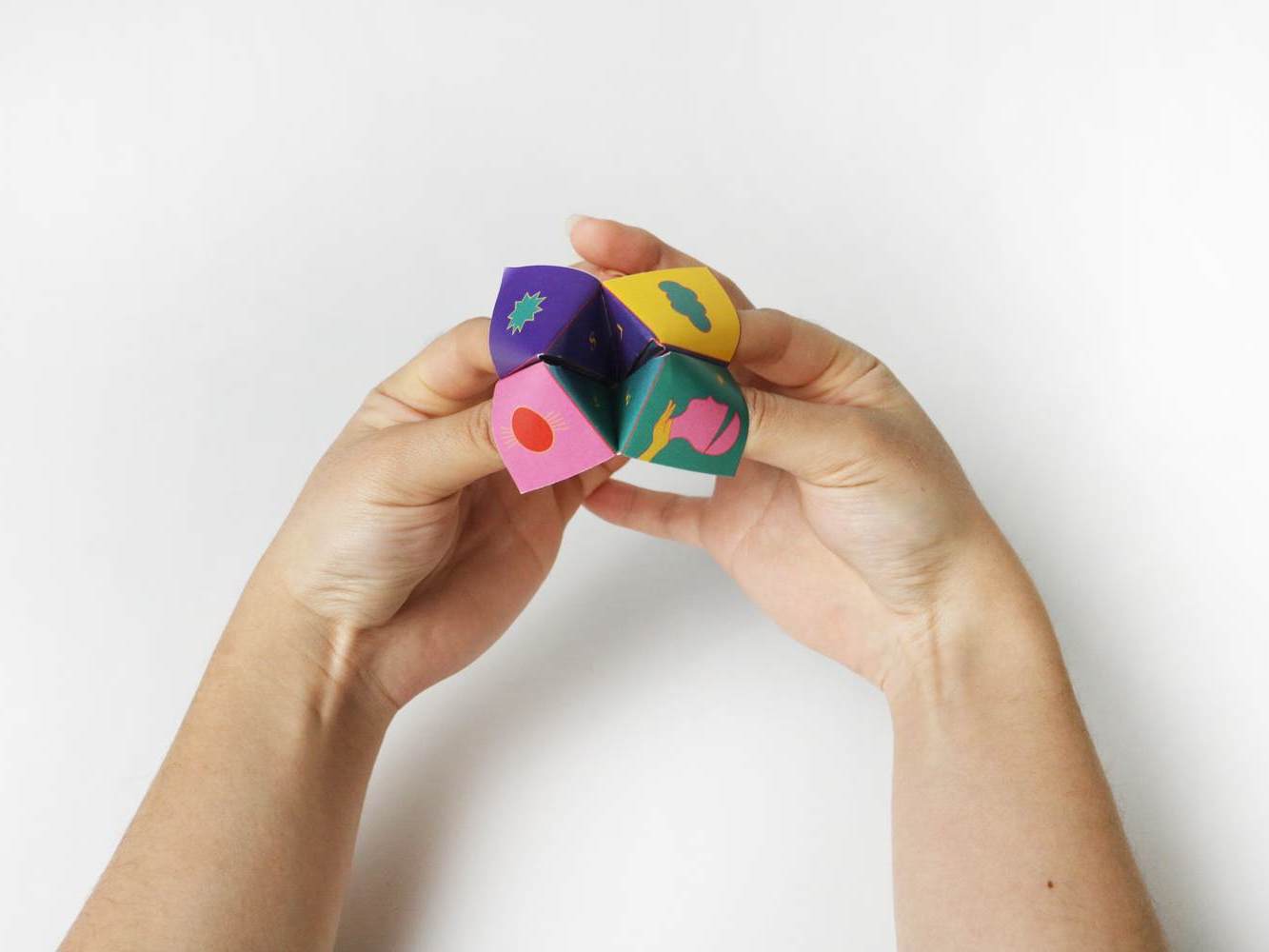
5. Fortune Teller
This foldable fortune teller offers an element of fun and a great take-home object. Users can use this when they are in a creative rut or even want to share with their fellow designers.
00. Raw Data
What is the state of design today?
Every year, AIGA releases data about design and the people behind it. After downloading the data sets, my teammates and I were surprised by the number of designers who participated in the survey. Our next step was to figure out how to narrow down our scope.

01. Selecting the Topic
What can we learn from and tell based on the data?
How can designers use data beyond the purpose of information delivery?
By analyzing these questions and the AIGA 2019 Design Census, we were most drawn to visualizing data that is most connected to emotions; therefore, we chose the “How Satisfied are Designers?” section of the census.
Within “How Satisfied are Designers,” there were 7 sub-sections. We chose to focus on “Satisfaction + Salary,” which is showcased by discipline type.
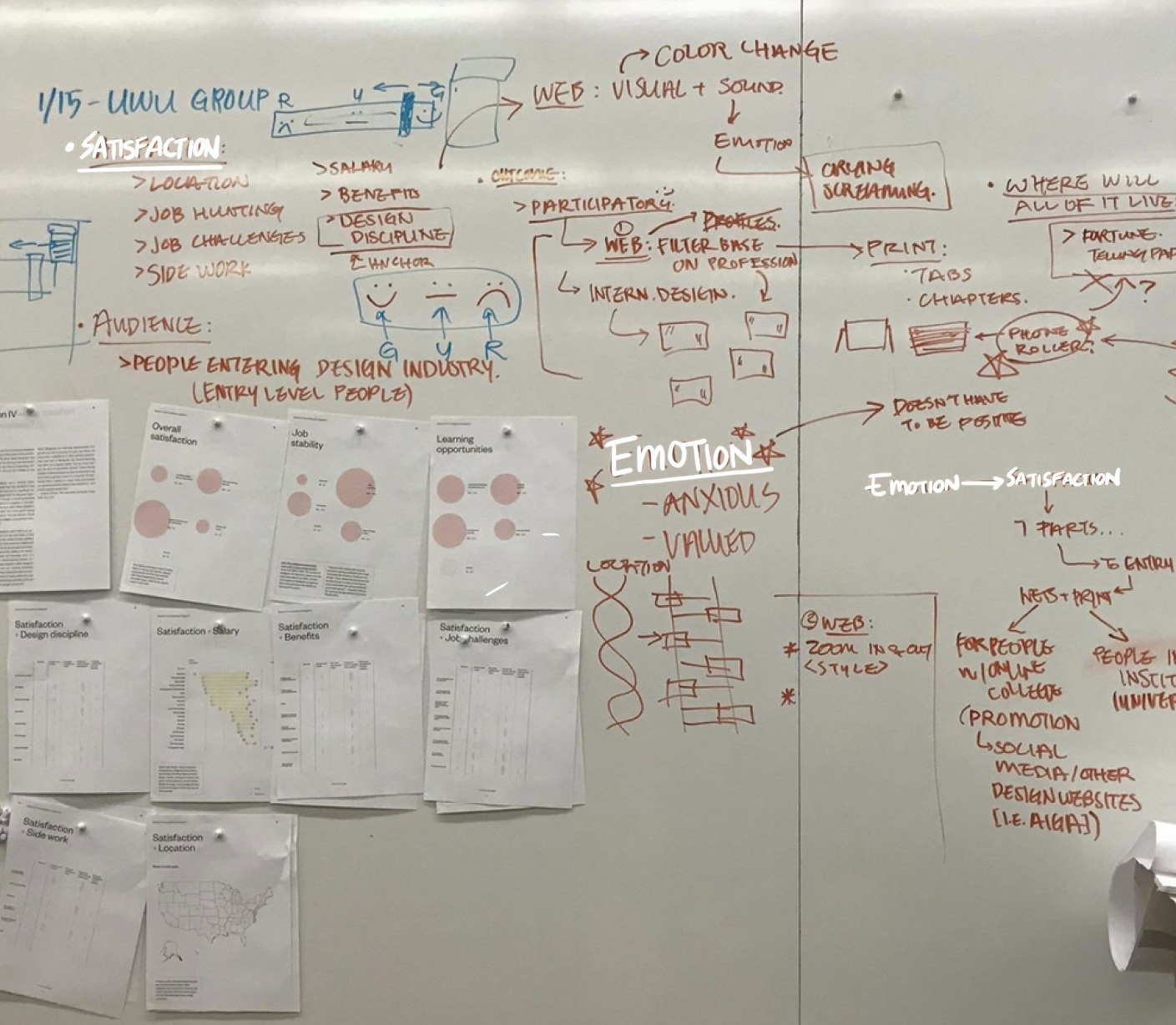
02. Theme Selection
What concerns young designers?
As we were analyzing the data, we noticed that it was not as hopeful as we thought it would be. We realized there are a lot of people experiencing uncertainty and stress, and at the same time, we were concerned about our futures, too.
Because we are young designers ourselves and close to finishing college, we wanted to create something that would alleviate the anxiety that comes with worrying about one’s future. From that goal, we decided to make our audience undergraduate designers going into the “real” world.
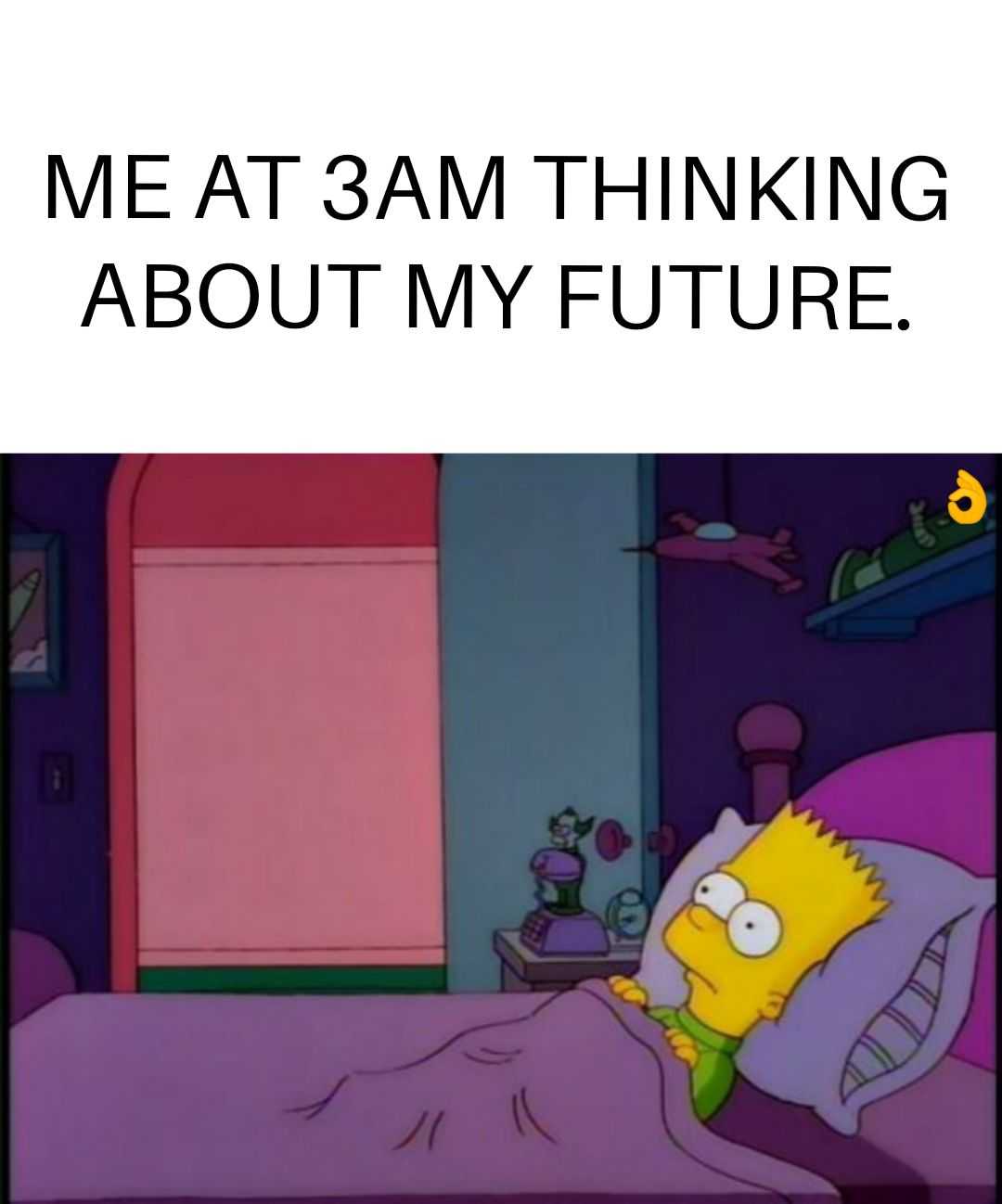
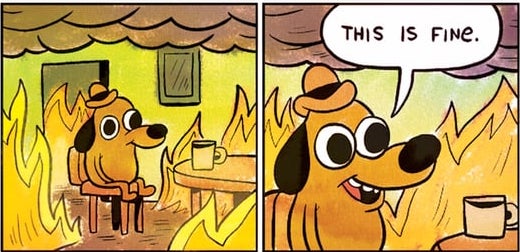
“Will I ever get a job? I wish I can see the future...”
There are times when we will say these things to ourselves. This thought led us to our idea of using fortune telling. Because fortune telling, astrology, and tarot cards have developed a pop culture appeal, rather than focusing on the experience, we used the visual language of the mystical process of telling the future.
We decided to connect the theme to not only fortune telling, but also dry/satirical humor that is relatable and is present in the current media culture (i.e. memes). The project is essentially a guide/fortune teller that helps young designers to feel that “the real world can be hard, but [they] are not alone.”
03. Data Analysis
From the raw data, we selected 4 categories to focus on:
✧ 1-4 years work experience
✧ Type of design discipline
✧ Annual income
✧ How satisfied they are
When parsing through the data, we each had 5 disciplines to organize. It was quite interesting to see how large of a gap certain disciplines had. For example, Graphic/Communication Design has 1,928 of the 9,429 total designers in the census while Game Design only has 18.
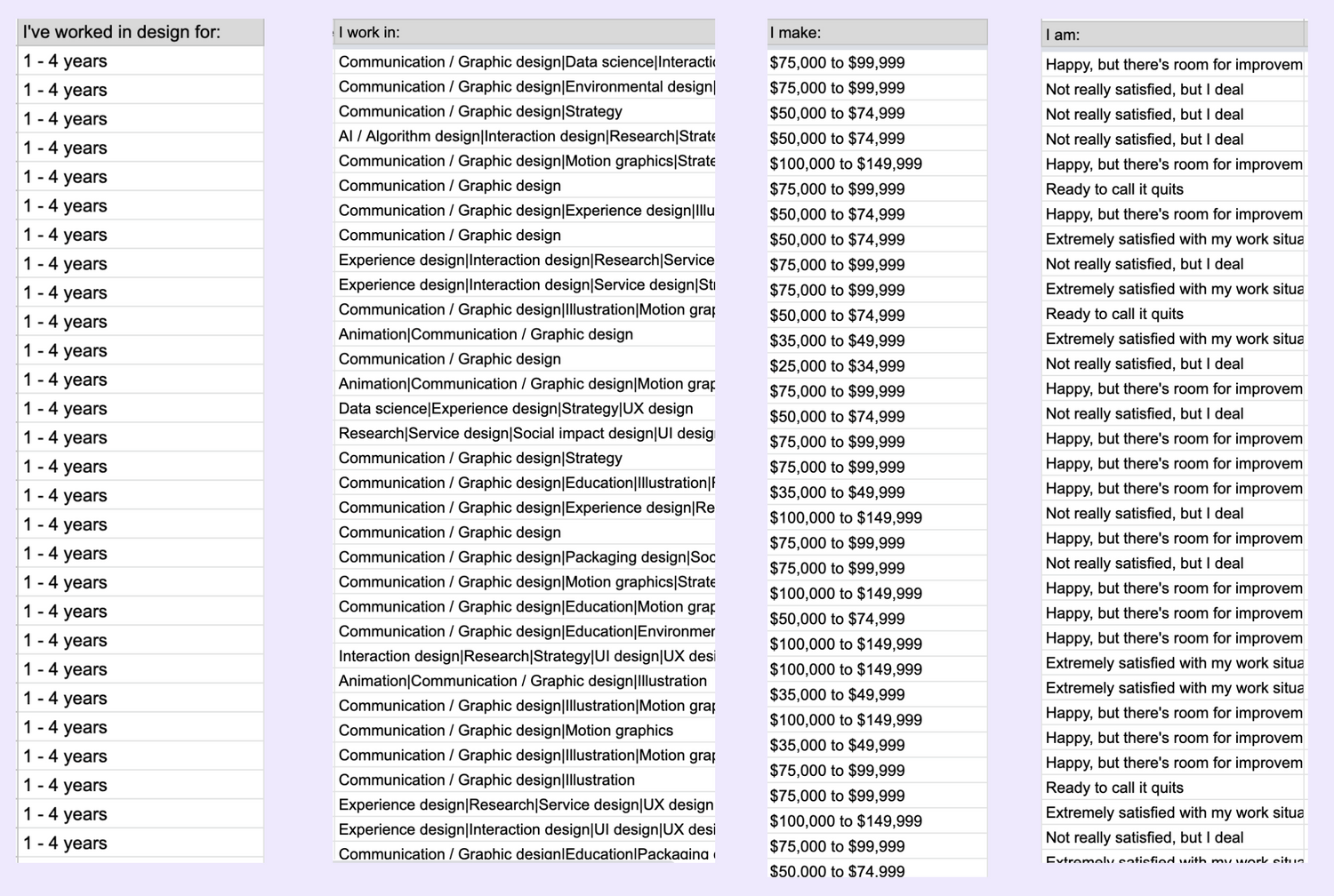
04. User Journey
How will the user interact with these tools?
The user journey map shows step by step of how the user will interact with the box and the assets within it. Each of these printed materials have a different function. Because we want this resource to be accessible to young designers in college, this box will live in studio spaces or advisory offices.
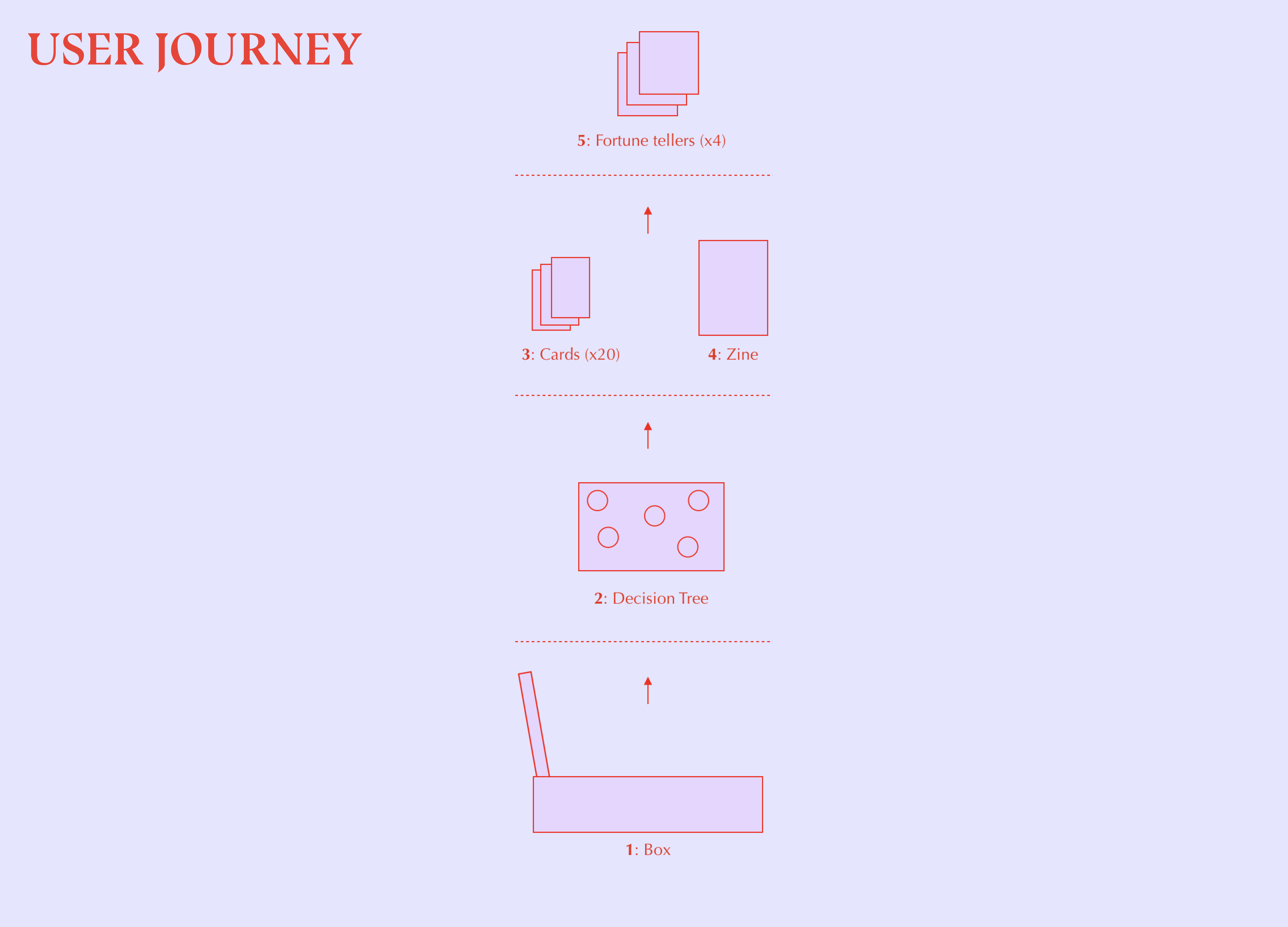
05. Visual System
What colors & textures remind you of tarot cards/fortune telling?
For the visual system, we created moodboards and asked 10+ college students what colors reminded them of tarot cards/fortune telling.


06. Final
Once all the assets were printed and finalized, we photographed everything together.
Special thanks to Kyuha Shim, our professor, for all of the support and guidance!
